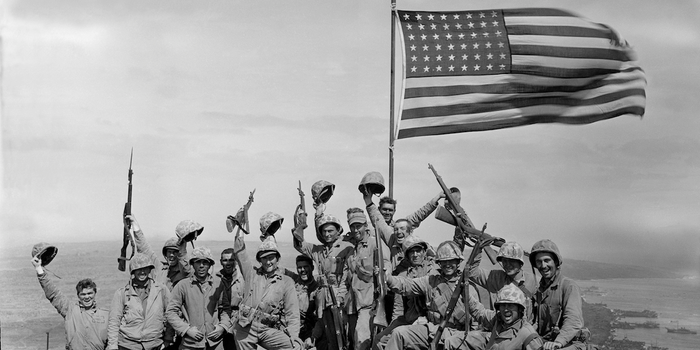On February 23, 1945, one of the most iconic battles in the history of the U.S. Marines reached a turning point in a moment that has since become one of the most recognized moments of World War II. When the battle began just four days earlier, everything seemed like it was going to go pretty smoothly. Three divisions of Marines had landed on the tiny, 8 square mile island of Iwo Jima. At first, they encountered little resistance. But then the Japanese soldiers started pouring out of the underground tunnels they’d built, and the Marines knew they were in for a serious fight.
The Marines quickly realized that the key to winning the battle lay in conquering the dormant volcano that dominated the southern half of the island, called “Hotrocks” by the troops. So they began their slow, torturous assault on the heavily fortified mountain. The Marines lost one soldier for every yard of ground they gained during what their commander termed “a hell of a day in a hell of a place.” Yet, on February 23, they finally reached the top of the mountain. There, the Marines raised the American flag to symbolize their victory, capturing the moment in a now-famous photo.
The fighting would continue until March 26, and it was still pretty intense, but after that day, the tide of the battle had swung decisively in the Americans’ favor. An astonishing 27 Medals of Honor were awarded for heroism during the battle, many of them posthumously.

